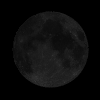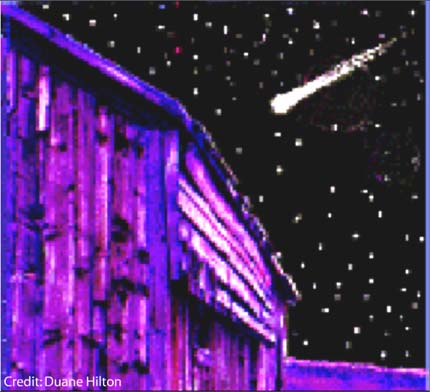Courtesy of EarthSky
A Clear Voice for Science
www.EarthSky.org

 For the next few nights, Draco the Dragon may or may not be spitting out “shooting stars,” also known as meteors. The legendary Draconid meteor shower is predicted to peak on the night of October 7 or 8. This shower produced major displays in 1933 and 1946 – with thousands of meteors per hour seen in those years – but since then has been so spotty that the tried-and-true Observer’s Handbook – source of so much wonderful sky info – lists a “?” for the rate of meteors expected at the peak of the Draconids in 2009.
For the next few nights, Draco the Dragon may or may not be spitting out “shooting stars,” also known as meteors. The legendary Draconid meteor shower is predicted to peak on the night of October 7 or 8. This shower produced major displays in 1933 and 1946 – with thousands of meteors per hour seen in those years – but since then has been so spotty that the tried-and-true Observer’s Handbook – source of so much wonderful sky info – lists a “?” for the rate of meteors expected at the peak of the Draconids in 2009.
If you are watching from a country location, you might spot some meteors, starting at nightfall and early evening. Most meteor showers are named for the constellation from which the meteors radiate on the sky dome. The Draconids, however, are sometimes also called the Giacobinids, to honor the man who first sighted the comet that spawned this meteor shower. Unlike many major showers, the radiant for the Draconids is highest up at nightfall, so watch for these meteors as soon as darkness falls.
Michel Giacobini discovered this comet on December 20, 1900. Another sighting in 1913 added Zinner to the name of the comet, 21P Giacobini-Zinner. It is a periodic comet, which returns every 6 years and 4 months. Tracking this comet, and noting this October meteor shower, helped astronomers figure out how to predict meteor showers in 1915. The great Draconid/Giacobinid meteor storms occurred in 1933 and 1946. The comet returned in 1998 as well, and the Draconids picked up that year, but only to a rate of about 100 per hour.
Coming up in our lifetimes, in the year 2013 – approximately two years after the comet approaches perihelion (closest approach to the sun) – there might be another meteor storm around the time of this shower’s peak. Or there might not be.
No meteor storm is expected this year. However, you might see more than a handful of “shooting stars.” Under normal conditions, when astronomers speak of a meteor shower peaking, it is similar to a weather forecaster saying, “The heaviest rain/snow is predicted for such-and-such hour.” In other words, the prediction might not be precise, since nature is always unpredictable to a degree. Nevertheless, the rate of the meteors is higher during the peak of a meteor shower than on any other night.
For tips on viewing meteor showers read this EarthSky article.
For a taste of history related to this shower, go to the Astronomy Abstract Service from the Smithsonian and NASA and find a 1934 article called “The Meteors from Giacobini’s Comet” by C.C. Wylie. It is an account of the famed meteor storm of 1933.
![]() Written by Deborah Byrd
Written by Deborah Byrd
Astronomy Picture of the Day from NASA/JPL
U.S. Naval Observator Astronomical Information center
The York County Astronomical Society
 Print This Post
Print This Post








